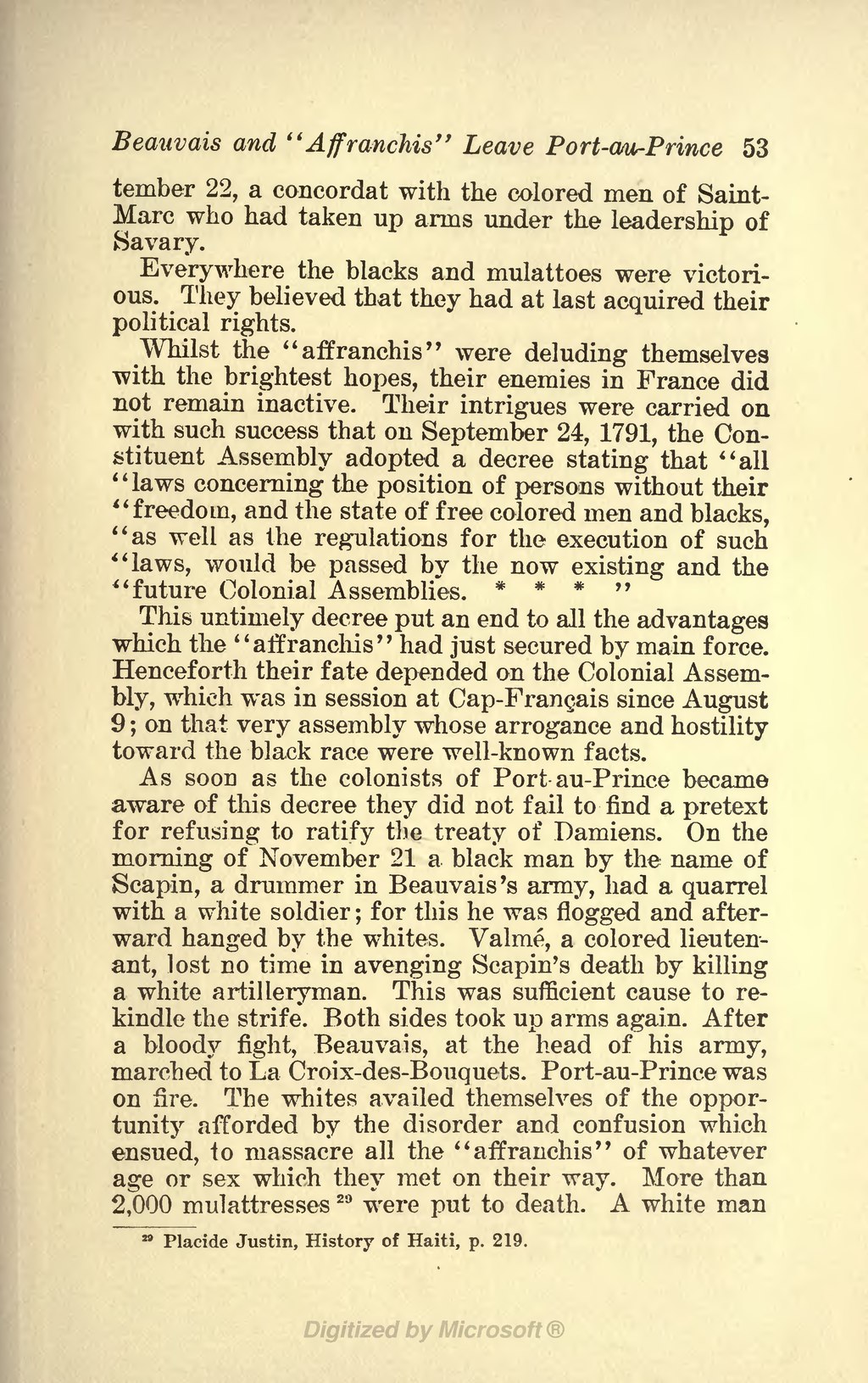tember 22, a concordat with the colored men of Saint-Marc who had taken up arms under the leadership of Savary.
Everywhere the blacks and mulattoes were victorious. They believed that they had at last acquired their political rights.
Whilst the "affranchis" were deluding themselves with the brightest hopes, their enemies in France did not remain inactive. Their intrigues were carried on with such success that on September 24, 1791, the Constituent Assembly adopted a decree stating that "all laws concerning the position of persons without their freedom, and the state of free colored men and blacks, as well as the regulations for the execution of such laws, would be passed by the now existing and the future Colonial Assemblies. … "
This untimely decree put an end to all the advantages which the "affranchis" had just secured by main force. Henceforth their fate depended on the Colonial Assembly, which was in session at Cap-Français since August 9; on that very assembly whose arrogance and hostility toward the black race were well-known facts.
As soon as the colonists of Port-au-Prince became aware of this decree they did not fail to find a pretext for refusing to ratify the treaty of Damiens. On the morning of November 21 a black man by the name of Scapin, a drummer in Beauvais's army, had a quarrel with a white soldier; for this he was flogged and afterward hanged by the whites. Valmé, a colored lieutenant, lost no time in avenging Scapin's death by killing a white artilleryman. This was sufficient cause to rekindle the strife. Both sides took up arms again. After a bloody fight, Beauvais, at the head of his army, marched to La Croix-des-Bouquets. Port-au-Prince was on fire. The whites availed themselves of the opportunity afforded by the disorder and confusion which ensued, to massacre all the "affranchis" of whatever age or sex which they met on their way. More than 2,000 mulattresses[1] were put to death. A white man
- ↑ Placide Justin, History of Haiti, p. 219.
